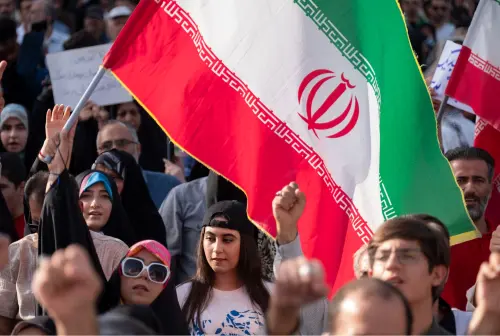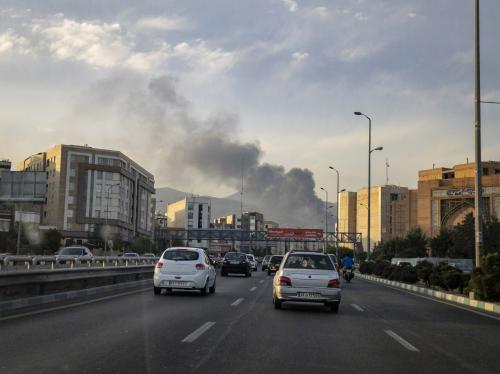The stampede that took place near Mecca, Saudi Arabia, during the Hajj last week cost nearly 800 lives and generated geopolitical implications that are rippling through the region and beyond. We’ve put together a brief guide to explain what happened and what it means for the region.
What is the Hajj?
The Hajj is the annual pilgrimage to Mecca that all adult Muslims are supposed to make at least once in their lives, provided they are physically and financially able to do so. It is one of the five mandatory religious duties, or “five pillars,” of the Islamic faith. The Hajj takes place during a specific period of time every year according to the Islamic calendar. Although Muslims can make the pilgrimage to Mecca at other times of the year, such visits do not satisfy the requirement to perform the Hajj.
Millions of the world’s estimated 1.6 billion Muslims travel to this location each year in order to fulfill their religious obligation. This presents a massive logistical challenge for the Saudi government, which has spent billions of dollars over the years to improve the safety and efficiency of the undertaking. The Saudis established a strict and at times controversial country quota system to limit the number of people allowed to engage in the Hajj each year; this year, over two million people from 183 countries participated.
So what actually happened?
The incident took place a few kilometers from Mecca in a place called Mina, the vast “tent city” where pilgrims spend the night during the hajj in some 160,000 temperature-controlled, fireproofed, Teflon-coated fiberglass tents. The stampede occurred as densely-packed crowds coming from two different directions converged at the intersection of two of the wide, multi-level pedestrian roads that lead to Jamarat, the site where pilgrims cast stones at pillars to symbolize the ritual stoning of the devil during Hajj.
The New York Times published an informative interactive feature last week on how the stampede unfolded.
[T]his year, over two million people from 183 countries participated.
The details of what sparked the stampede are still unclear, and Saudi Crown Prince Mohamed bin Nayef, the focus of a Brookings Essay by Senior Fellow Bruce Riedel released today, has ordered an investigation into the incident. A spokesperson for Saudi Arabia’s interior ministry said that high temperatures and fatigue may have played a role. As reported by the BBC,
“the Saudi health minister, Khaled al-Falih, said the crush occurred because many pilgrims moved ‘without respecting the timetables’ established by authorities. Saudi-owned al-Arabiya TV reported that the head of the central Hajj committee, Prince Khaled al-Faisal, blamed the stampede on ‘some pilgrims with African nationalities’.”
The head of Iran’s Hajj organization, Said Ohadi, said that for “unknown reasons,” two of the paths to Jamarat had been closed off, leaving only three routes instead of five for the two million people to travel on to the site of the stoning ritual.
Has something like this ever happened before?
As reported by Al Jazeera, the tent city
“has been the scene of many tragedies over the past two decades. A 1990 stampede inside a pedestrian tunnel killed almost 1,500 people, while stampedes in the stoning of the devil area in 1990, 1994, 1998, 2003, 2004 and 2006 claimed the lives of hundreds. The eruption of a fire in 1997 burned thousands of tents and killed over 300 people.”
And although it didn’t technically occur during the Hajj, over 100 people died just two weeks ago when a crane collapsed in Mecca’s Grand Mosque. Accidents aren’t the only tragedies that have occurred during the Hajj: In 1987, 402 people died when security forces broke up an anti-U.S. demonstration by Iranian pilgrims.
What are the political implications of this?
Iranian pilgrims comprise the largest number of casualties reported from any single country: at least 169 were killed in the incident. Before most of the victims had been identified, Iranian leaders issued statements blaming the Saudis for the accident. Iran’s Supreme Leader Ayatollah Khamenei stated, “The Saudi government is obliged to accept its heavy responsibility in this bitter incident and meet its obligations in compliance with the rule of righteousness and fairness; mismanagement and improper measures that were behind this tragedy should not be undermined,” and declared three days of mourning for the victims of the stampede. Iranian President Hassan Rouhani cut short his visit to the United Nations General Assembly to return to Tehran for public mourning.
As Riedel, director of the Brookings Intelligence Project, noted in a post last week, coming on the heels of the deadly crane collapse in Mecca a few weeks ago, the stampede is yet another blow for the Saudi royal family, whose legitimacy to rule the country is heavily predicated on its role as the custodian of the two holiest places in Islam. These tragedies have intensified the longstanding power struggle between the Sunni House of Al-Saud and the Shiite leaders of Iran over who is the legitimate custodian of the two holy places—and by extension, who is the rightful leader and defender of the Islamic faith.
The Saudi government has faced previous challenges to its legitimacy as the custodian of the two holy places. In 1979, the same year the Iranian Revolution brought the clerical government to power in Tehran, a group of several hundred armed Muslim extremists calling for the overthrow of the House of Saud and claiming the arrival of the Mahdi, the Muslim savior, took some 100,000 people hostage at the Grand Mosque of Mecca during dawn prayers. The dramatic siege took two weeks and the help of French special forces to break, leaving hundreds of people dead.
The image of the helpless Muslims being saved by the powerful West was one that would have lasting consequences for the Saudi monarchy and the world; indeed, Yaroslav Trofimov, the author of the book “The Siege of Mecca,” argues that this was one of the defining incidents that caused Osama bin Laden’s loyalty to the Saudi state to begin to crumble.
The Brookings Institution is committed to quality, independence, and impact.
We are supported by a diverse array of funders. In line with our values and policies, each Brookings publication represents the sole views of its author(s).



Commentary
Your questions about the Hajj stampede, answered
September 29, 2015